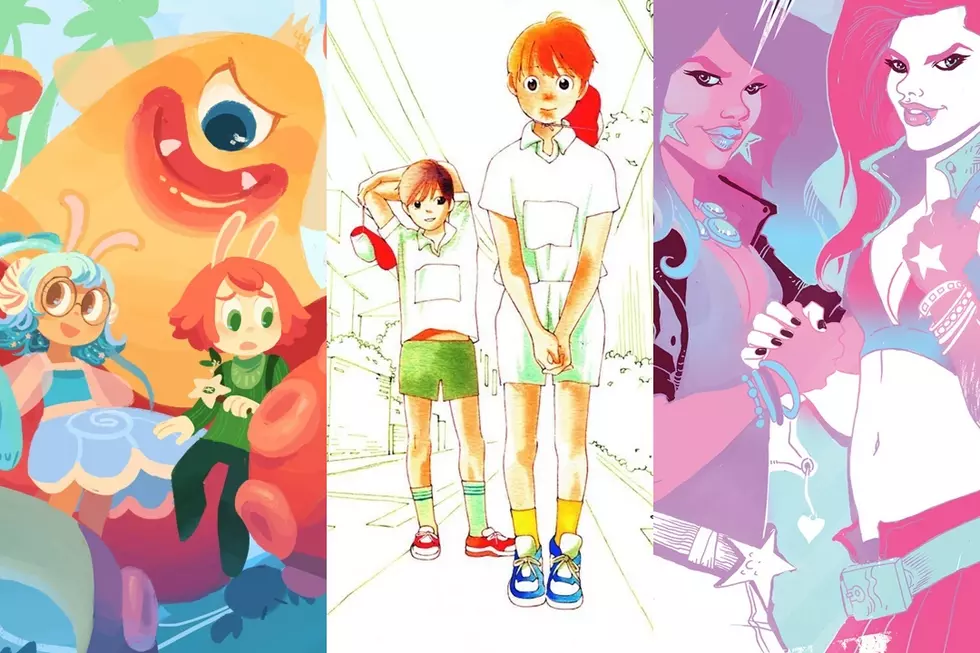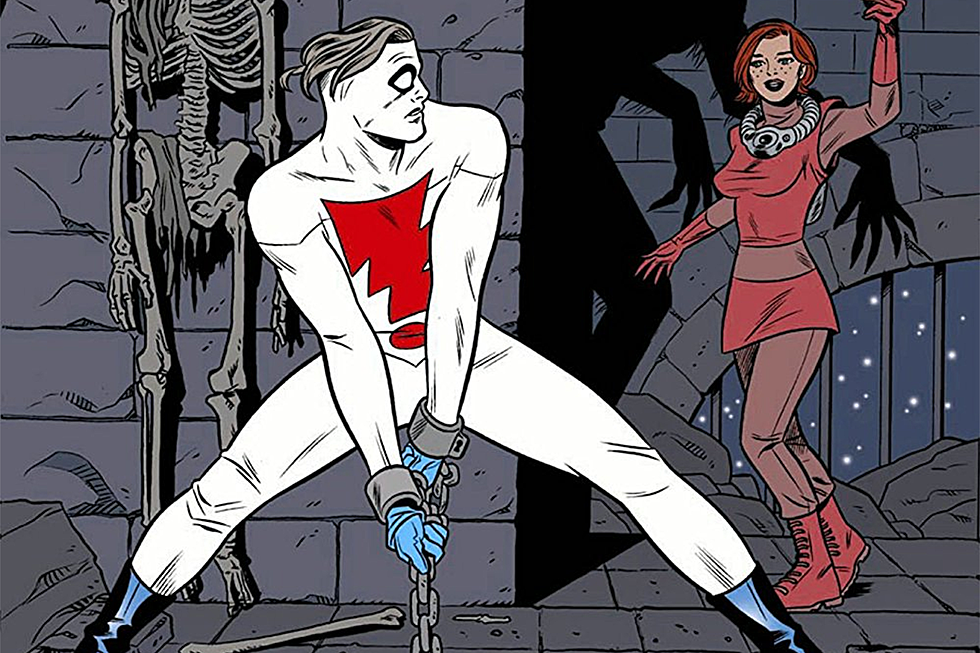![Joe Keatinge and Ross Campbell’s ‘Glory’ Lives Up to the Name [Review]](http://townsquare.media/site/622/files/2012/01/glory01.jpg?w=980&q=75)
Joe Keatinge and Ross Campbell’s ‘Glory’ Lives Up to the Name [Review]

When Image Comics announced last year that it was doing a full-on relaunch of Rob Liefeld's Extreme Studios comics, the most surprising thing for me wasn't that this was something that was happening in the year 2012, but how much I was looking forward to it. The crazy combination of reviving some of the most archetypical comics of that early Image era and then putting creators like Brandon Graham on Prophet immediately made them the comics that I was most curious about going into the new year.
Now they're finally coming out, and with the upcoming Glory by Joe Keatinge and Ross Campbell, any expectations I had going into this book have been completely blown away by how good it is. With all due respect to Joe Keatinge, who I'll get to in a minute, the first thing that grabbed my attention about this book was just how beautiful it is. I've been a fan of Campbell's art for a while -- especially when he's devoting his talents to drawing Jem and the Holograms -- but his work in Glory is just on another level from his pin-ups, with fluid motions, expressive faces and even shifting styles that you just don't get in more static pieces. And a lot of that comes down to the way that he draws Glory herself.
With all due respect to Joe Keatinge, who I'll get to in a minute, the first thing that grabbed my attention about this book was just how beautiful it is. I've been a fan of Campbell's art for a while -- especially when he's devoting his talents to drawing Jem and the Holograms -- but his work in Glory is just on another level from his pin-ups, with fluid motions, expressive faces and even shifting styles that you just don't get in more static pieces. And a lot of that comes down to the way that he draws Glory herself.
There's definitely a Frank Quitely influence on Campbell's work, and it shows pretty strongly in his version of Glory. She specifically reminds me a lot of the way Quitely drew Wonder Woman in JLA: Earth 2, but Campbell takes her beyond that, and the word that comes to mind for his end result is "solid."
He doesn't fall into the trap that a lot of artists do by choosing to draw a woman who looks either beautiful or strong. He manages to pull off both, and it's a pretty neat trick. She's clearly beautiful, with soft features and that truly improbable amount of flowing platinum blonde hair, but he doesn't give her the wasp-waisted, waif-like body that super-heroines usually get stuck with.
It's a pretty stark contrast to the way the character's been drawn with in the past, which could charitably be described as "angular."

Instead, Campbell draws a beautiful woman that's built like she could punch out a tank, which is exactly what she does on the splash page:

That's not a character that looks like she has super-powers, that's a character that looks like she's just straight up wrecking everything she can with pure brute strength. There's a difference there, and it just boils down to the fact that she looks strong, which is a nice touch given that the issue focuses on her history as someone who's been trained to fight for five hundred years, and underscores the danger inherent in anything that could stop her.
There's a scene early in the book where one of the characters, as a little girl, is telling another kid on the playground that Glory could totally beat up Supreme, Liefeld's stand-in for Superman. A few pages later, you there's a scene between Glory and Supreme, and it looks for all the world like that little girl was right and that Glory could kick a hole in Supreme's chest without blinking. A bit of that comes from some clever artistic cheating on Campbell's part, in that he frames the sequence so that you never really get a full shot of Supreme. He's always cut off by the panel borders, while the focus stays on Glory.
But it's the contrast that really matters. In a world that's set up so that we can look at it and go "oh right, it's like Superman and Wonder Woman," she looks like the toughest person who has ever walked the face of the planet. And through it all, she never loses that beauty either.

It all plays into what Keatinge's doing with the story, which is essentially a Wonder Woman story with everything about it cranked up as high as it can go. It starts right at the beginning where he and Campbell indulge in the signature ultraviolence that was so prominent in the Image books of the '90s. Glory isn't just punching out a tank in that panel above, she's punching out a tank while she rips off a man's arm off on a battlefield of dead bodies, and spends the next panel literally snapping a Nazi in half over her knee.
And it just goes from there, getting bigger and more larger than life in every page, until it all comes crashing down at the end.
Like a lot of what happens in this book, that ending has its roots in a very simple trick from the writer's toolbox -- in this case, it's the old routine where you make someone look insanely strong and then show them getting hurt so that the threat they're facing looks even stronger -- but Keatinge pulls it off with a skill that makes it insanely enjoyable. And he does it every time, with every trick that shouldn't work.
There's a four-page sequence that recaps Glory's origin for the benefit of new readers, and the way that Keatinge chooses to relate this information is by having Glory just say it out loud to another character. It's the ultimate in telling instead of showing, and it's exactly the sort of thing that lazy writers do. Under normal circumstances, this would be awful, and if Keatinge were just a little less good at what he does, it would be here too.
Instead, he makes it work.

It's an undisguised infodump -- and one that's pretty much necessary, since this is coming out as Glory #23, about 16 years after Glory #22 -- but the way it's phrased, the relationships at play that are causing this conversation, it's all done perfectly.
It's unavoidable to talk about Glory and Supreme without referencing the characters they're standing in for, but this scene that really underscores a difference between Superman and Wonder Woman that instantly makes her (and Glory) appealing in a way that I had never considered: she chose to leave her home and battle evil, while he had that decision made for him thanks to a rocket from a dying planet and/or Supremium meteorite.
That status as stand-ins that can make these characters so fun for writers to play with, especially in the case of Supreme. He was, after all, the subject of one of Alan Moore's greatest and most underappreciated comics, in which he essentially wrote his ideal Superman run for a couple of years. It's worth noting that he almost took a shot at Glory too (and Youngblood), managing to get a single issue out before it all fell through
It feels like Keatinge's definitely informed by that idea in Glory, something that he and Campbell acknowledge with a nice trip through past stories that don't actually exist:

But the story that they're telling doesn't feel like a retread of either Wonder Woman or Moore's reconstruction of Supreme. What they do in this book, and more importantly the way they do it, feels like something bold and new and different. As much as Extreme Studios may have been a symbol of the excesses of the early '90s, this book doesn't feel like a throwback.
It feels like what's next.
More From ComicsAlliance
![All The Image Comics Announcements From Emerald City Comic Con [ECCC ’17]](http://townsquare.media/site/622/files/2017/03/Image-Featured.png?w=980&q=75)








